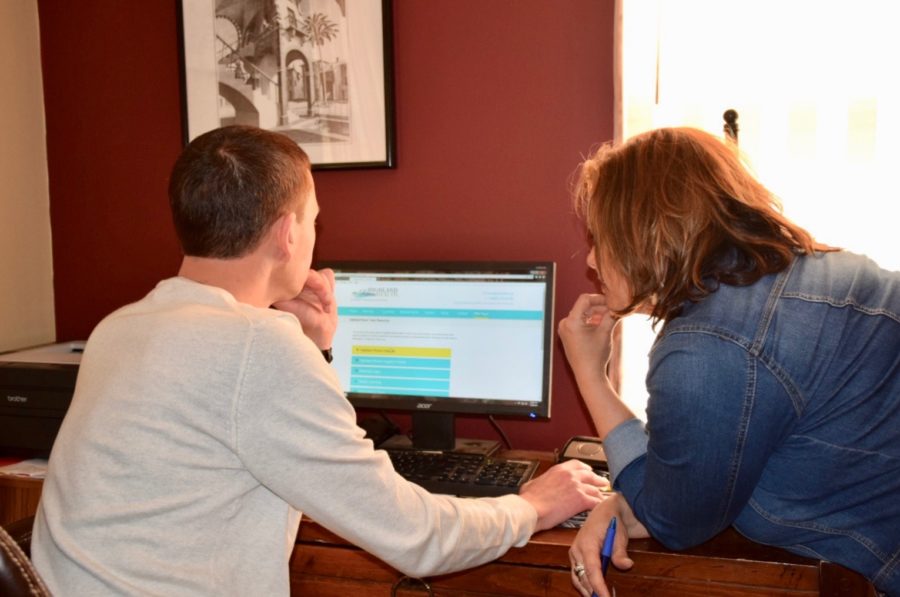This is the second in a series of articles reported in Northwest Georgia, an area rich in stories about unmet health needs and about people and programs making a difference. Georgia Health News and the health and medical journalism graduate program at UGA Grady College of Journalism and Mass Communication collaborated to produce this series, made possible by support from the Healthcare Georgia Foundation and the Institute of International Education.
David woke up on a cold floor. The only thing in view was a toilet looming next to him. His concept of time was hazy, but as he staggered from the bathroom he saw a clock and realized that he couldn’t account for 18 hours of his life.
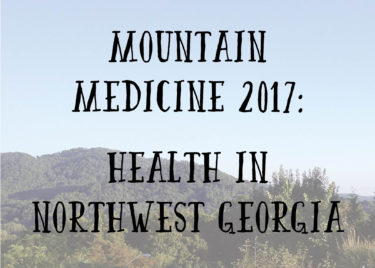
That’s one memory from a troubled life.
David has been a drug addict since he was 15 and has relapsed after stays at four treatment centers, years of AA meetings and intervals of sobriety that ultimately proved unsustainable.
Today, however, David has hope. He believes his life will be different when he finishes his stint at the men’s residential treatment facility at Highland Recovery Center in Jasper. In his early 30s, he’s one of 20 men living at the center.
It’s not a fancy-looking place. It’s surrounded by scrub forest near a lumber mill and a concrete plant, and the architecture consists of a series of one-story buildings, sheathed in beige siding and connected by breezeways. Set among the buildings are a few grassy areas, ornamental trees and shrubs, a birdbath, and some raised flower beds painted bright colors by residents.
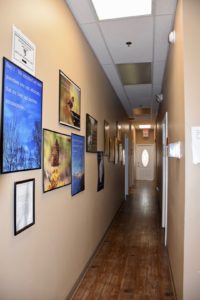
What goes on here can change lives.
“This place has been amazing – I can’t say enough good things about it,” said David. “It’s free for everybody [who qualifies], which is really helpful, and there’s a lot of good guys here.”
The program is free because it is operated by Highland Rivers Health, a community service provider that runs tax-supported mental health and substance abuse programs for 12 counties in Northwest Georgia. The agency serves about 16,000 people annually.
People can be seen routinely coming and going from three of the buildings in the complex, which are used for outpatient therapy (for individuals and groups), and the occasional conference or meeting.
But two buildings are set off from the rest by a strip of red tape on the broad sidewalk. This is where David and other men in the residential program live. They are not allowed to cross this line without permission. One building is the men’s living quarters; the other has common areas. Between the two is a covered concrete expanse with weights and benches and a ping pong table.
Lots of treatment centers, but what kind of treatment?
A recent count shows 71 for-profit drug treatment centers in Georgia – some offering methadone or another form of drug-assisted recovery, some offering counseling, and some providing both.
These treatment centers have popped up to combat the growing problem of Americans dependent on opioids.
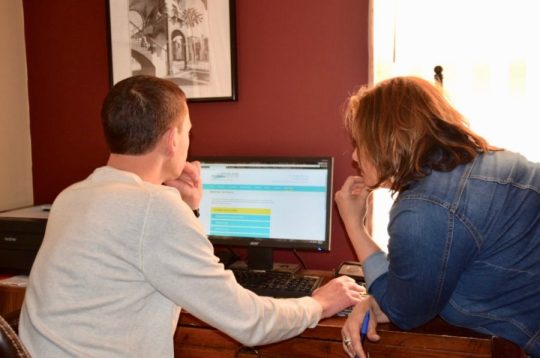
In 2015, 12.5 million Americans reported misusing pain relievers and 914,000 reported use of heroin. That same year, 88 percent of drug overdose deaths in Georgia were due to opioids.
Some policymakers in Georgia worry about the proliferation of these businesses in the state, and the General Assembly recently authorized a new legislative committee to scrutinize drug treatment centers more closely.
“We’re overwhelmed with them,’’ said state Sen. Jeff Mullis (R-Chickamauga). Georgia, he added, “has an easy permit process” for such treatment centers, and many of the patients they treat are coming from neighboring states where the rules are tighter.
Too many centers with too little regulation could expose desperate people to unnecessary risk.
Dr. James Craig, a physician at Highland Recovery who specializes in addiction recovery, explained this problem.
[youtube]https://www.youtube.com/watch?v=3n8fkwQObqU&t=8s[/youtube]“If two people have a heart attack at the same time and go to completely different hospitals in different counties, they’re still going to get the same treatment,” he said. However, “if two people have a heroin problem and they each go to different treatment center, they may get vastly different treatment because there is no standardization for evidence-based addiction medicine,” said Craig, who works one on one with many of the men at the resident facility in Jasper.
Highland Rivers Health says its approach to addiction makes it different from most of the treatment centers popping up in the region.
Education and individually tailored support are the twin pillars of Highland Recovery Center’s approach to recovery from substance abuse. There is no one-size-fits-all program.
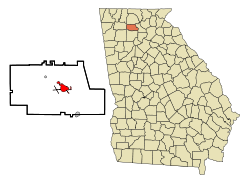
As soon as David entered the residential program, he and the counselors worked together on a treatment plan for him. The same holds true for every patient. The team identifies strengths, weaknesses and abilities of every new arrival, and together they choose a regimen. Treatment always includes daily one-on-one and group counseling sessions.
Each treatment plan evolves as a man makes progress, always working toward getting sober, strengthening his social support networks, and stamping out any kinds of behavior that are likely to lead to arrest.
“The difference, in my opinion, of coming here is that your treatment is not dictated based on your [insurance] payer,” said Ansley Silvers, the manager of addictive diseases and residential services at Highland Rivers Health. “Your treatment and how long you’re in treatment is dictated by your success, your participation and how well you’re doing.”
David can vouch for the fact that substance abuse treatment varies greatly from facility to facility. “I’ve noticed in my prior treatments, where you’re at dictates what you’re getting treatment for.”
Structure, education and understanding
Somewhere along Highway 400, the Oxycontin pills worked their magic on Matt – and then the magic went haywire as toxic levels of the drug flooded his body. He lost control and crashed his car. Fortunately, EMTs came fast and restarted his breathing.
Some people would have sworn off drugs after this brush with death. But Matt kept using for months before he finally agreed to his parents’ offer to take him to Highland Recovery Center for help.
“For an addict to even take recovery seriously, they have to hit rock bottom. They have to want to do this for themselves,” said Matt.
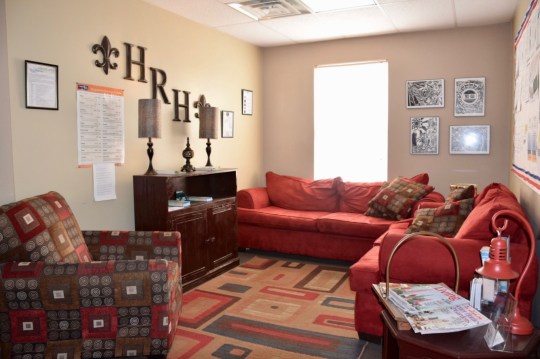
In the past two years, Highland Recovery Center’s six-month program has served an average of 60 men per year. Since January of this year, 26 men have been served. It also operates a program for women, located in Rome.
“At Highland Recovery, I’ve learned what addiction really is and the role dopamine plays in the process,” said Matt. “They’ve shown us healthy ways that you can produce dopamine – such as working out and eating healthy – without having to rely on drugs.”
Life at Highland Recovery Center is not for idlers. Residents live at the facility for six months, and every day is tightly organized
The men rise early, start the day doing chores, then participate in classes and counseling sessions. Residents spend unscheduled time reading, working out or playing ping pong. The staff organizes supervised field trips on weekends, and after 90 days in the program some men get part-time jobs in Jasper.
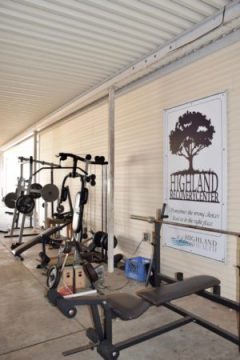
It sounds a bit like boot camp without uniforms, but David said it is not as regimented as some facilities he has seen.
“I’ve been in places I’ve had to pay for where it’s been military-style and super strict,” he said. “At Highland, there’s enough structure to keep you in line, but it’s also laid back enough to where you can do your own thing during breaks.”
Highland Recovery aims to do more than just sober up the center’s residents. It strives to teach them ways to cope with substance use disorder. The goal is to provide all the residents with a strong set of skills to deal with problems – without turning to drugs – for the rest of their lives.
Because the treatment center is funded by the state, it is open only to Georgia residents. Participants also must have been diagnosed with substance abuse disorder. Many also have diagnoses of mental health issues, but even that is not a guarantee of immediate access to the residential program.
The wait for one of the 20 inpatient beds is normally one to two months. In the meantime, prospective residents often enroll in Highland Rivers’ intensive outpatient program for substance abuse.
Sitting on a red couch in Highland Recovery’s waiting area, David voices the most important thing he has learned from the residential program.
“It’s not a moral fault. There’s a lot of good-hearted people that are really trying to quit using and are trapped in addiction. The things I’ve done – I’m a different person. I’d want people to know that I’m not the bottom of society.”
Kristina Griffith is a graduate student at the University of Georgia pursuing a degree and career in journalism. Having obtained her bachelor’s degree in psychology, she has a special interest in topics relating to addiction and other mental health disorders.

